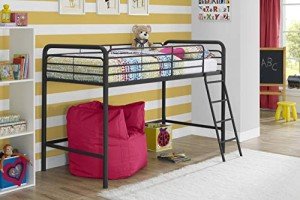Check Out: How Bunk Beds Is Taking Over And What To Do About It
Exploring Bunk Beds: A Comprehensive Guide
Bunk beds have long been a staple in kids's bed rooms, dorm rooms, and even homes with minimal space. Not only do they offer a practical sleeping service, but they likewise produce an enjoyable and creative environment for children and a great space-saver for adults and households. This post will check out everything you require to learn about bunk beds, from types and products to safety ideas and purchasing advice.
Tabulation
- Types of Bunk Beds
- Conventional Bunk Beds
- Loft Beds
- Triple Bunk Beds
- L-Shaped Bunk Beds
- Material Options
- Wood
- Metal
- Security Considerations
- Buying Guide
- Frequently asked questions
Kinds Of Bunk Beds
Bunk beds are available in various styles to match different requirements and choices. Here's a breakdown of the most typical types:
Conventional Bunk Beds
Conventional bunks generally include 2 beds stacked vertically on top of one another. These beds are perfect for siblings sharing a room or for optimizing sleeping space in visitor rooms.
Loft Beds
Loft beds stand similarly to standard bunk beds however do not have a lower sleeping location. Instead, they often integrate a desk or seating location beneath, making them a great choice for little rooms needing multifunctionality.
Triple Bunk Beds
Triple bunk beds are designed for 3 residents, with beds stacked in a three-tier setup. These are less common however can be a fun option for big households or sleepovers.
L-Shaped Bunk Beds
With one bed placed horizontally and the other vertically, L-shaped bunk beds are typically equipped with extra functions such as desks or storage drawers and can complement corner areas in a room.
Comparison of Bunk Bed Types
Bed Type
Ideal Use
Description
Standard
Shared bedrooms or visitor spaces
Two beds stacked vertically
Loft
Little spaces requiring multi-purpose space
Upper bed with open space beneath
Triple
Big households or sleepovers
3 beds stacked vertically
L-Shaped
Corner or flexible spaces
A mix of vertical and horizontal beds
Material Options
Bunk beds are made from different materials, with wood and metal being the most common. Each product has its pros and cons.
Wood
- Toughness: Generally robust and can withstand years of use.
- Aesthetic Appeal: Offers a timeless appearance that can mix with various designs.
- Weight Capacity: Typically stronger; can support heavier weights.
- Disadvantages: May be more pricey than metal choices and can be prone to scratches.
Metal
- Sturdiness: Generally light-weight and simple to move but still sturdy.
- Modern Design: Often is available in streamlined designs, making it appealing for modern areas.
- Cost-Effective: Usually cheaper than wood options.
- Downsides: Can be cold to the touch in winters and might not have the exact same aesthetic appeal for some purchasers.
Safety Considerations
When it concerns bunk beds, security can not be overlooked. Here are key safety pointers to remember:
- Guardrails: Ensure that the top bunk has guardrails on both sides to avoid falls.
- Durable Construction: Check for a solid construct and tough materials to endure weight and motion.
- Weight Limit: Adhere to the manufacturer's weight limitation for both the upper and lower bunks.
- Ladder Design: Choose bunks with a safe, easy-to-climb ladder and avoid any sharp edges or rungs.
- Age Restrictions: Most producers suggest that children under the age of six need to not oversleep the upper bunk.
Buying Guide
When shopping for bunk beds, think about the list below elements to find the best fit for your needs:
- Space Availability: Measure the room size and ceiling height, making sure there is appropriate space for the top bunk.
- Bed Size: Decide in between twin, complete, or larger sizes based upon your requirements and the size of the room.
- Style Preference: Consider the general decor of the bedroom to find a suitable design.
- Alleviate of Setup: Look for a bunk bed that is uncomplicated to assemble.
- Budget plan: Bunk beds are available in different price varieties, so figure out a budget plan before beginning your search.
FAQs
1. What is the suggested age for children to sleep on the leading bunk?
Kids aged 6 and older are generally suggested to sleep on the leading bunk to decrease the risk of falls.
2. How can I make my bunk bed more secure?
To boost safety, make sure guardrails are appropriately set up and examine that the bed is put on a flat surface. Additionally, motivate kids to utilize the ladder thoroughly.
3. Can I convert a bunk bed into 2 separate beds?
Numerous bunk beds are developed to be convertible. Examine the producer's specs for convertibility features.
4. What accessories are available for bunk beds?
Typical accessories consist of bed linens, storage drawers, staircases instead of ladders, and tented canopies for an enjoyable visual appeal.
5. How do I maintain my bunk bed?
Routine checks for loose screws or structural integrity can assist make sure security. Dust the bed regularly and tidy spills immediately to keep the products in good condition.
Bunk beds are flexible and a space-efficient solution for various living situations, from children's rooms to guest lodgings. With Bunk Bed UK and materials readily available, possible buyers have a wealth of options to consider, guaranteeing a mix of usefulness and aesthetics. By prioritizing security and following the tips described in this guide, individuals can find the right bunk bed that matches their space and lifestyle, all while developing a pleasurable sleeping environment.
